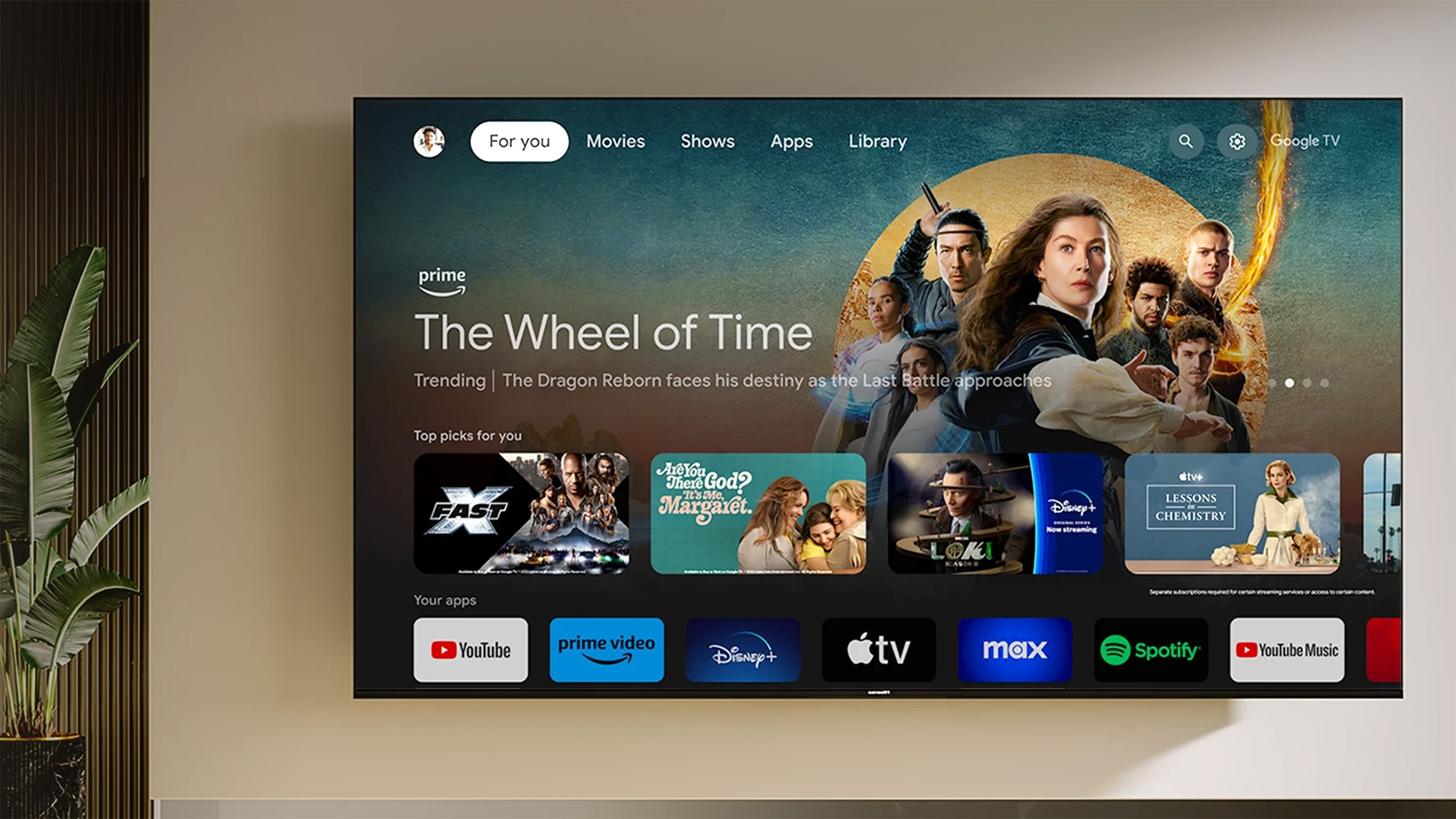
Hisense has made a name for itself as one of the best budget TV makers. Year after year, it delivers some of the best TVs built with superior brightness and excellent sound quality, all bundled into a value proposition that’s hard to match. The Hisense U7N Mini-LED TV, a $1,099 display corralling several premium gaming features and a slew of HDR compatibility atop the Google TV interface, continues this trend, but doesn’t quite reach the heights of the award-winning Hisense U8N.
Unlike its slightly costlier stablemate, some enhancements on the U7N were certainly overlooked, like the addition of two extra HDMI 2.1 ports, getting that input latency down below the 10ms mark, and limiting on-screen reflections. If those issues weren’t enough, the U7N also suffers from blooming and poor off-axis viewing, all due to its Mini-LED design.
It’s not all bad, though. If you’ve had problems hearing quiet dialogue or sound effects in action movies, the Hisense U7N will be a breath of fresh air. Its 40W speaker system brings the oomph in all things action movies, music-listening, and gaming. You wouldn’t expect audio to be at the top of the list, but it truly stood out on this TV, even more than its exceptional brightness and far improved motion processing over its earlier counterpart.
But can its slew of underlying features make it a worthwhile value pick for those looking to nab a well-rounded 65-inch TV for under $1,500? Read on to find out what makes and breaks the Hisense U7N following my nearly seven days with the display.
Hisense U7N review: Price and release date
Released in April 2024, the Hisense U7N Mini-LED TV takes up after the well-regarded U7K, coming in a range of sizes that starts at 55 inches and goes all the way up to 85 inches. It sits in the middle of the Hisense 2024 TV lineup, which corrals the Hisense U6N, Hisense U8N, and the newly introduced Hisense U9N.
Our testing was conducted on the 65-inch model, but since TVs are getting bigger, you might want to opt for something larger, especially given that minimal price change over the 75-inch amidst discounts. For more on TV configurations check out our what size TV should you buy page to get the best feel for your living condition.
- 55-in Hisense U7N Mini-LED TV (55U7N) - $799.99 ($599 on sale)
- 65-in Hisense U7N Mini-LED TV (65U7N) - $1,099.99 ($999 on sale)
- 75-in Hisense U7N Mini-LED TV (75U7N) - $1,499.99 ($1,099 on sale)
- 85-in Hisense U7N Mini-LED TV (85U7N) - $2,199.99
The Hisense U7N, much akin to its predecessor, is priced very well for its specs. One of its biggest contenders comes in the form of the newly released Roku Pro Series, itself quite a hefty bargain at $1,000 for its 65-inch model. Then there’s the TCL QM7, a $900 steal on discount that puts the biggest emphasis on gaming with its Motion Accelerator 240 feature (not to mention its high-flying collaboration with Activision’s Call of Duty).
Hisense U7N review: Design
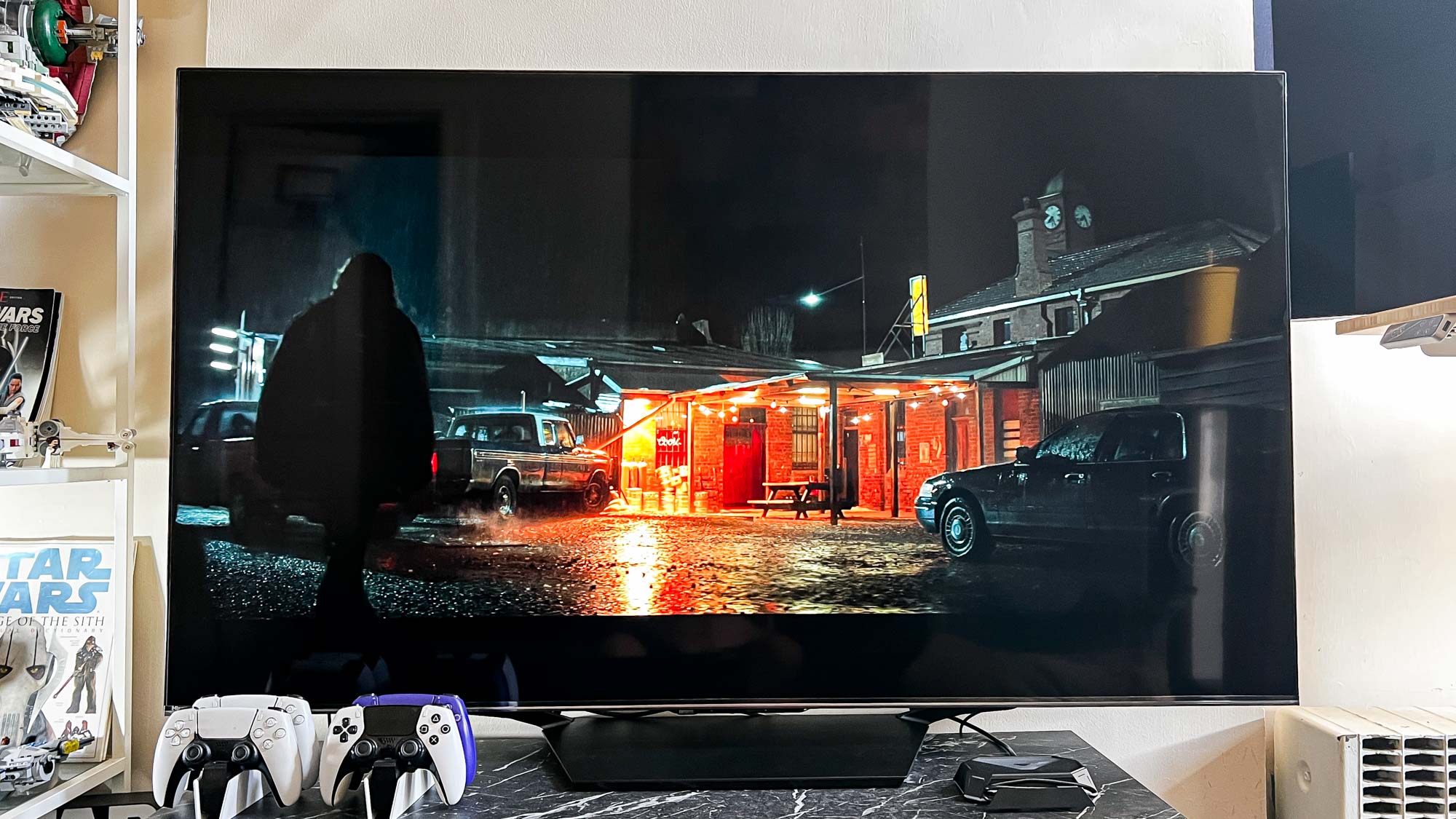
The Hisense U7N is built on an LCD display and VA panel with full array local dimming via Mini-LEDs. The panel’s no longer dual IPS/VA, which comes readily apparent in the many glare issues that arise on the U7N, especially in darker scenes, though you’ll notice bright scenes as well. On its 65-inch model, which we tested, the U7N comes equipped with a total of 384 local dimming zones.
This display comes equipped with a 144Hz refresh rate leveraging the new Hi-View Engine Pro, taking things a step further over last year’s mere Hi-View Engine. Given its predecessor’s standing among the best TVs with ATSC 3.0 tuners, the Hisense U7N also makes its mark with the standard for NextGen TV access.
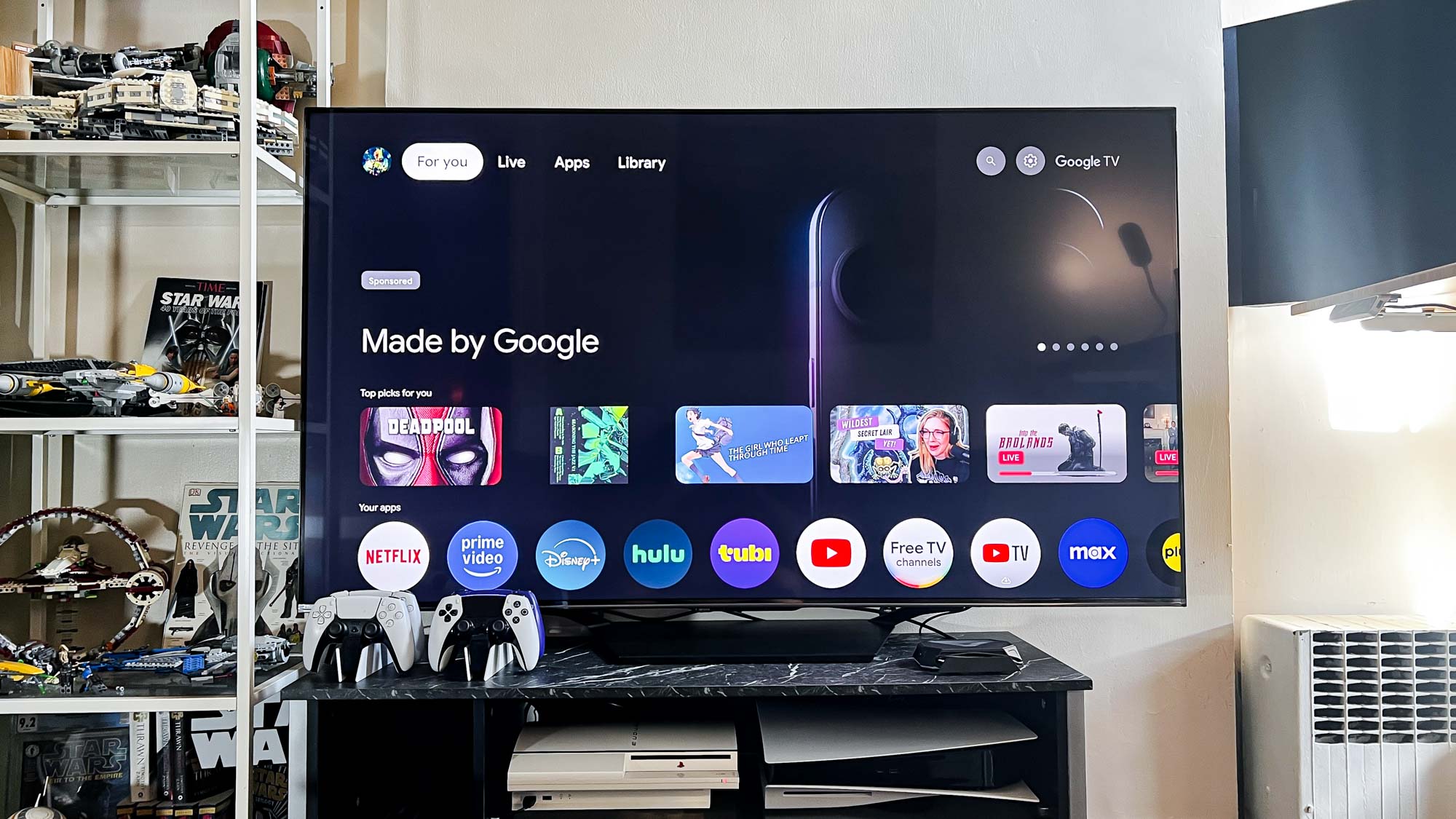
I’m happy to report that Hisense has updated its TV stand with a far better design that allows it more stability and simplified setup. Two detachable legs attach to the back of the TV while a third platform piece brings the whole display together nicely, gifting it a sleek and elegant look all the same.
If TV stands aren’t your thing, you’re in luck, as the Hisense U7N does come with wall-mountable VESA compatibility on the 400x300 standard. Check out our best TV wall mounts to get the one that best suits your home or apartment.
Hisense U7N review: Ports
One of the U7N’s biggest drawbacks for me is the inclusion of just two HDMI 2.1 ports out of its four total, making it a tough sell among the best HDMI 2.1 TVs. Beyond that, it also comes equipped with two USB ports, 5.3 Bluetooth compatibility, WiFi 6E, and a digital audio output.
As mentioned previously, an ATSC 3.0 tuner also ensures you have access to NextGen TV, which is currently the sole provider for all things 4K broadcasts.
Hisense U7N review: Performance
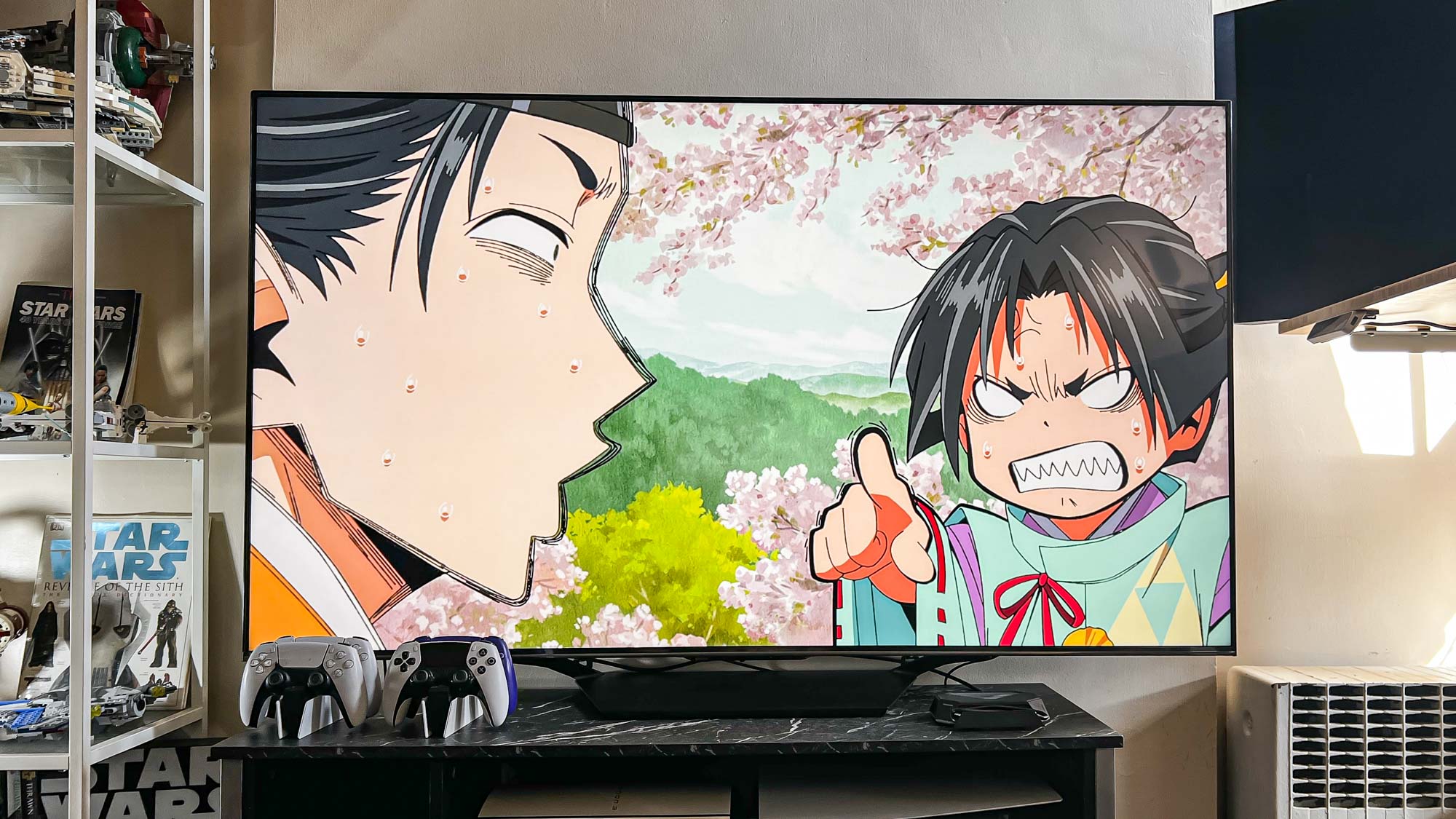
As with most TVs I test, I threw a ton of varied content its way, including anime, HDR movies, and sports. Its lower Delta-E, a measure of its color accuracy, is best witnessed in colorful animated shows like “Elusive Samurai” and “Tower of God,” which really popped on this screen. It helps that it's got some serious SDR color coverage as well with a 99.9027 on the Rec.709 gamut.
But where the Hisense U7N truly shines is in its HDR performance. From the fast-paced, hyper-car-fueled “Fast X” to the meditative darkness of “Interstellar,” the U7N does bring excellent visuals through the help of its own gamut of format coverage that spans HLG, Dolby Vision, and HDR10+. It also helps sporting 1,369 nits of HDR brightness, but unfortunately, this does little in diminishing its glare issues.
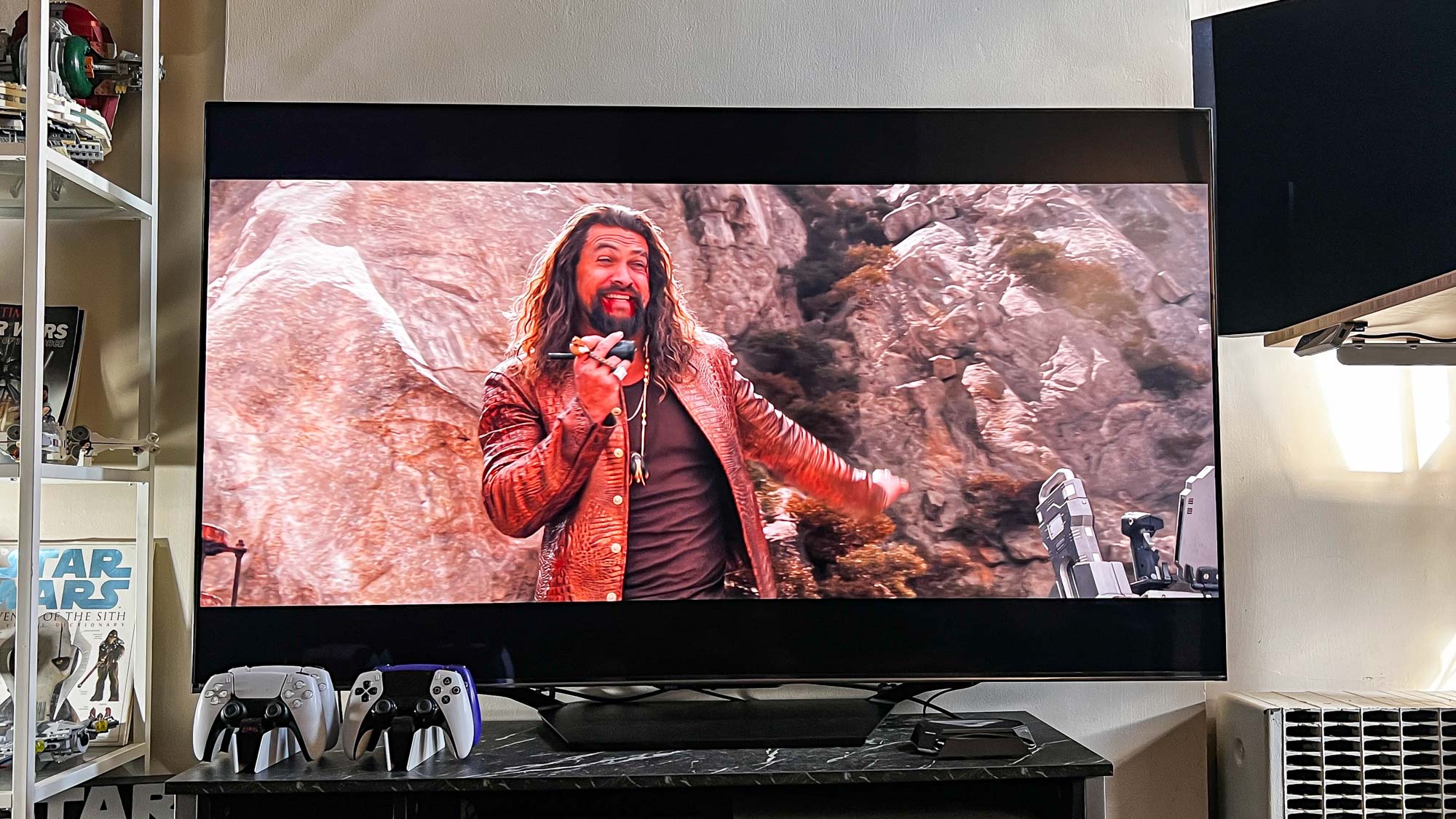
I’m happy to note that motion processing has been improved on the U7N from the U7K, which I noted was lacking. The aforementioned “Fast X” alongside the Paris Olympics, via games like badminton, basketball, and tennis, all looked smooth and showed few distortions in more fast-paced scenarios.
Other notable moments included its handling of darker scenes as experienced in content like “Interstellar” and “The Wolverine.” While nowhere near as good as an OLED screen, Hisense’s U7N still looks great with few blemishes. However, given its Mini-LED backlighting, I noticed some haloing in certain scenes.
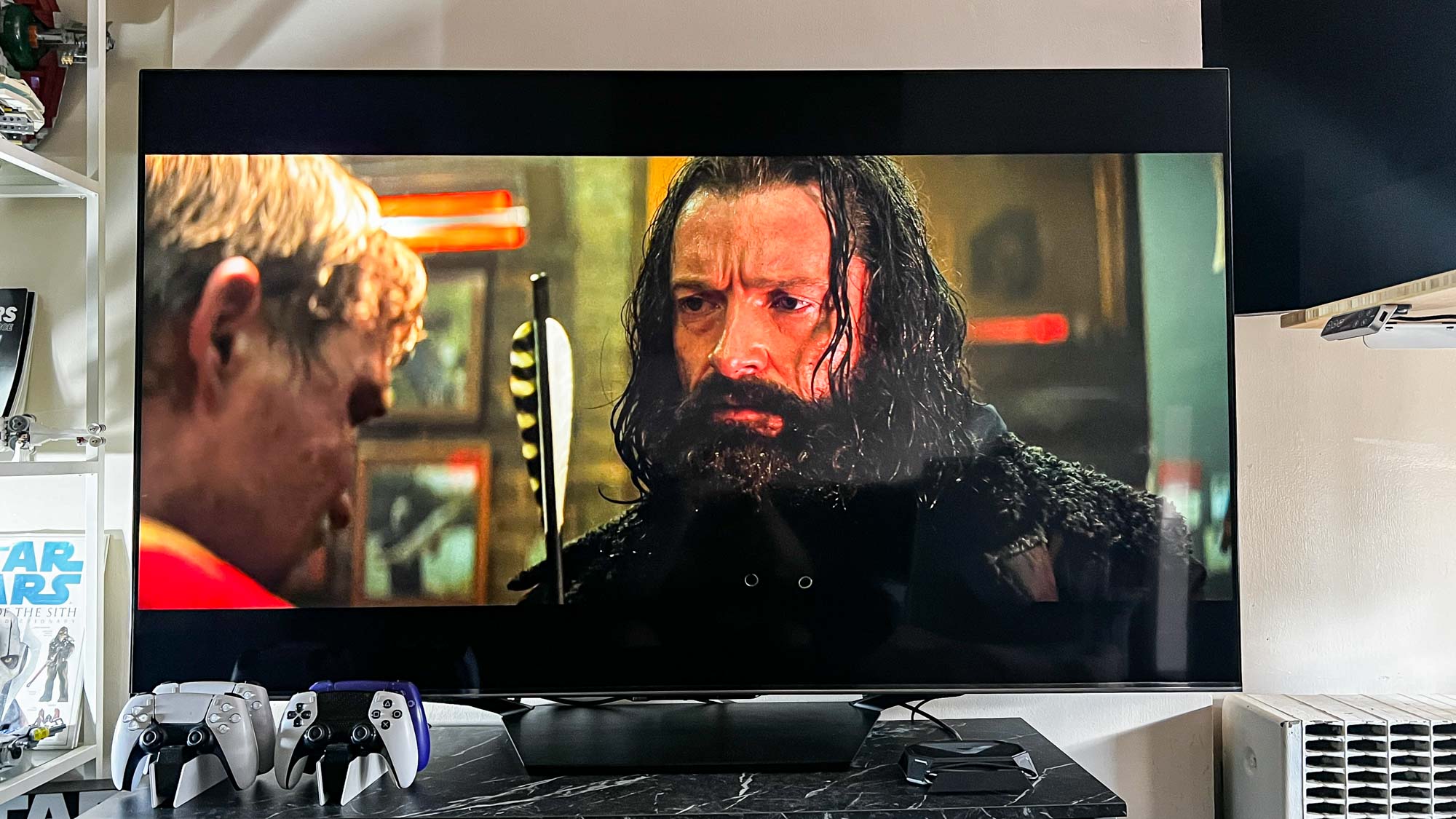
One thing I will note is that when in Filmmaker mode the U7N would very occasionally stutter or flicker at random times. I’m not too sure what the issue is and it never seemed to happen in Standard, Vivid, or other picture settings. I’ve reached out to Hisense to see what the issue might be on this front, though it could be anything from miscalculations with the AI processing to simply Filmmaker mode itself being buggy.
Hisense U7N review: Test results
To get some quantitative testing data we used an X-Rite i1 Pro spectrophotometer, a SpectraCal VideoForge Pro pattern generator, and Portrait Displays’ Calman calibration software to put the Hisense U7N up against its toughest competitors: Roku Pro, Samsung Q70C, and the Hisense U7K.
The Hisense U7N is a step above its predecessor thanks to some serious brightness performance and a far lower Delta-E score, which measures color accuracy. Brightness might be far improved on the U7N over its earlier model, but the gains pale in comparison to the wider story of the display and it faces some tough competition in the form of the Roku Pro Series with its far improved SDR brightness performance.
Although its HDR color accuracy diminished in its Rec 2020 coverage and input latency remains unchanged at 13.2ms, the U7N might have done well with the addition of an anti-glare coating or screen. Plus, while the Samsung Q70C has even lower UHDA-P3 color gamut coverage, the U7N does little better at just 95.16%, a number even its predecessor beats with ease.
Hisense U7N review: Gaming
With both ALLM and VRR support built on a 144Hz panel, the U7N does well in bringing some serious firepower to its gaming potential. It even has both FreeSync and G-Sync for improved screen tearing mitigation, and a streamlined Game Bar makes on-the-spot settings changes an absolute breeze.
In addition to its mere two HDMI 2.1 ports, the U7N is also weighed down by its 13.2ms input latency, which is ideally under 10ms. And this is a real shame, as last year’s U7K also sits at 13.2ms. You’d think Hisense would want to give its newest models some extra legs in this department (especially given the fact that gaming was such a big part of what made the U7K so great).
Hisense U7N review: Audio
Audio performance is never quite as good as you might hope on a conventional TV, but Hisense is known for emphasizing the importance of great sound on its TVs, as witnessed in the side-bearing speakers of its U9N. The U7N, while not as impressive, definitely still brings the oomph where it counts thanks to its 40W speaker system.
Plus, Dolby Atmos support means audio is truly crisp and punchy when you need it to be. We usually recommend some of the best soundbars to go alongside the TVs, but I doubt you’d truly need one if you’re living in a smaller space. With its volume maximum at level 100, I never found myself needing to reach above 30 (and even at that level, it was pretty bombastic).
Hisense U7N review: Interface and apps
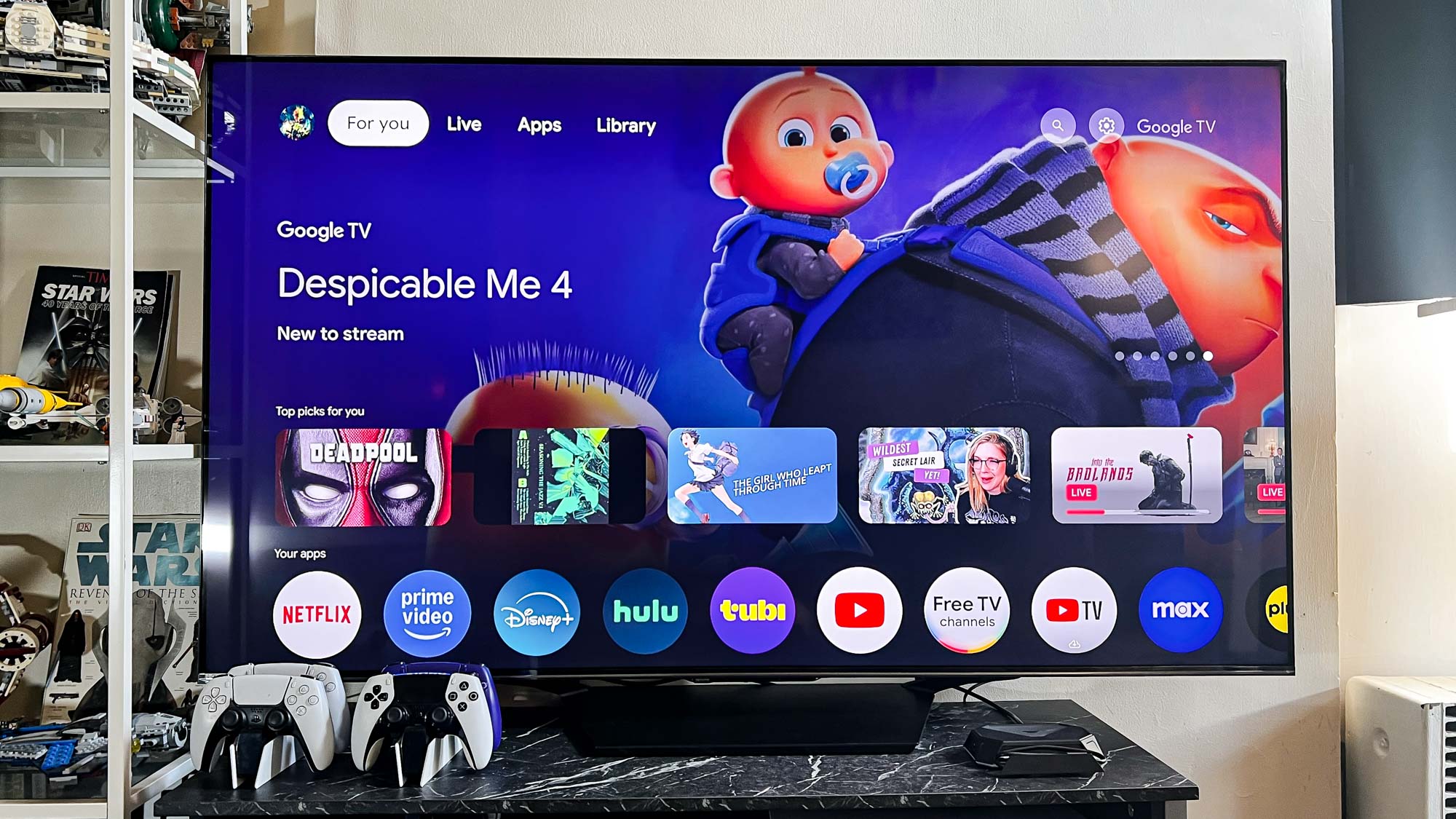
It’s hard to complain about Google TV, as there’s so little friction with the interface. Add to that its multitude of streamlined capabilities, namely voice-activated searches and a string of detailed suggestions, and it stands tall as a powerful option against the competition.
You have at your fingertips practically every app under the sun and almost immediate access, so long as you mainly use Google to sign in to the best streaming services. Still, while the TV itself does have some great native gaming capabilities on one of the best interfaces, Google TV still lacks access to cloud streaming services, like Xbox Game Pass and Nvidia GeForce Now.
Hisense U7N review: Remote
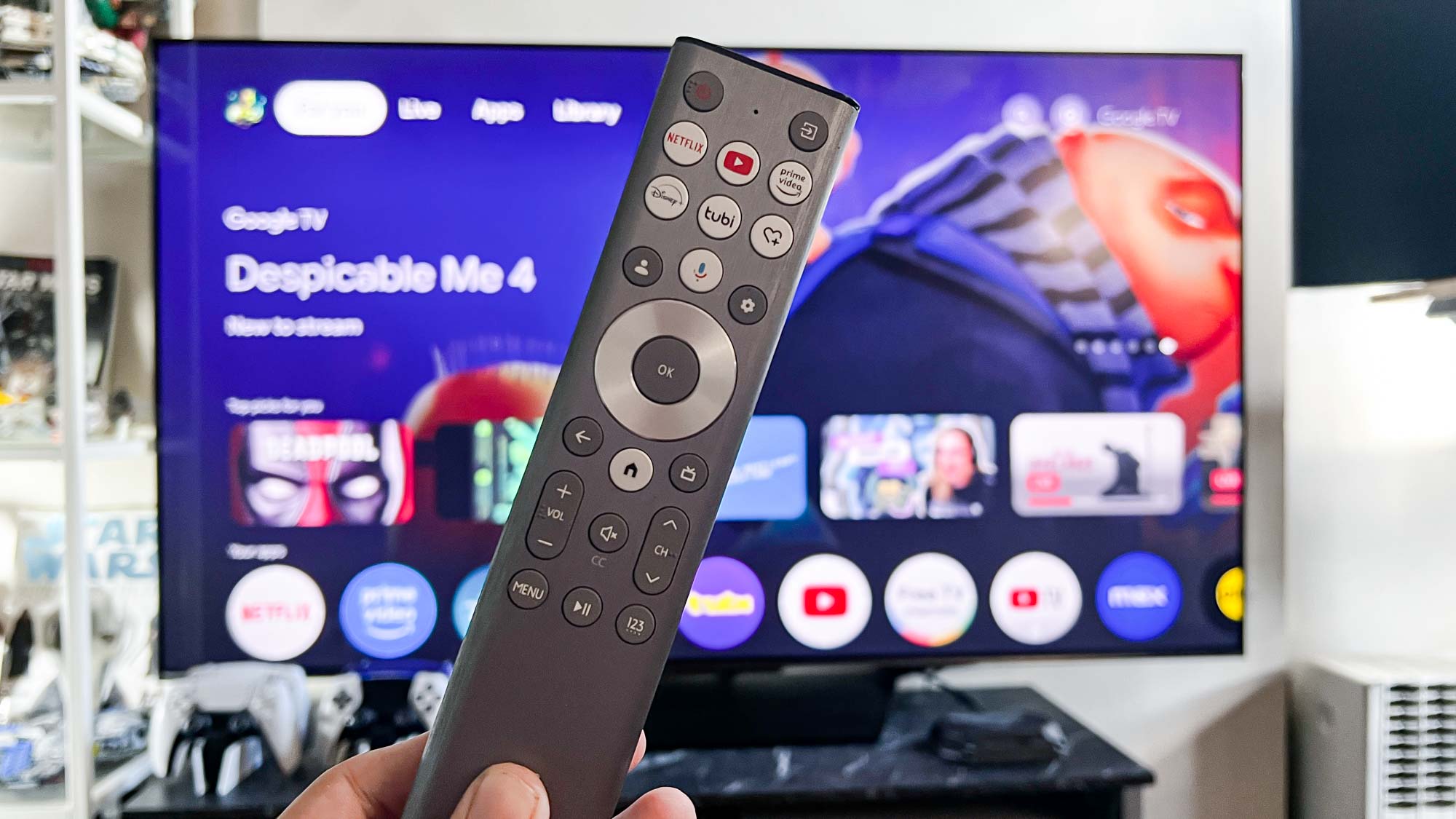
Hisense did well in updating its U7 remote, which now has backlit buttons similar to the new Roku Voice Remote Pro. It dropped the bulkier and black design in favor of a more sleek and silver look that feels quite nice in the hand. It’s a bit longer than I would like, as for me the smaller Samsung and Roku remotes prove the perfect size, but what Hisense really needs to do is copy said aforementioned designs with an internal rechargeable battery.
At the top of the remote and below both the input and power buttons are a set of quick-launch options, which all seemingly mirror its predecessor with instant access to YouTube, Netflix, Prime Video, Disney Plus, and Tubi, though it seems Hisense has dropped the dedicated “Apps” button. Instead, there’s a handy heart button that serves as a favorite display input so you can seamlessly swap to a connected device like a PS5, PC, or otherwise.
Hisense U7N review: Verdict
The Hisense U7N is a worthy addition among value TV propositions. It’s got stellar brightness coverage (enhanced quite phenomenally against its predecessor) and brings a slew of gaming features to bear for those inclined. And while nowhere near as powerful as its U9N counterpart, it might well have one of the best speakers on the block.
The U7N, however, falls ever so slightly by its mishandling of key enhancements, namely drawing out improved input latency on a platform with more than just two HDMI 2.1 ports. Plus, its leveraging of Mini-LED backlighting means you’ll have to sacrifice better off-axis viewing for improved brightness.
And while the 65-inch model’s $1,099 price on discount might make it quite the bargain, there’s actually some better options out there. The $900 TCL QM7 comes equipped with a new Motion Accelerator 240 measure that allows gamers to sacrifice resolution for higher frames. Plus, it even has a 50W speaker.
Then, there’s last year’s U7K, which still proves a major value proposition and one of the best TVs under $1,000. For just $800 for the 65-inch model, it corrals many of the same specs as its successor, including a 144Hz refresh rate and the full gamut of HDR formats (all built out on a 50W speaker system, to boot). Unless you care about higher peak brightness because you have a hard time seeing all the details in your favorite HDR shows and movies, the price on its predecessor and its value far outweighs the higher brightness and other performance gains delivered on the Hisense U7N Mini-LED TV.
If $200 doesn’t make or break the bank for you, then the U7N is a worthwhile investment that will only drop in price as we get closer to Black Friday and Cyber Monday.







